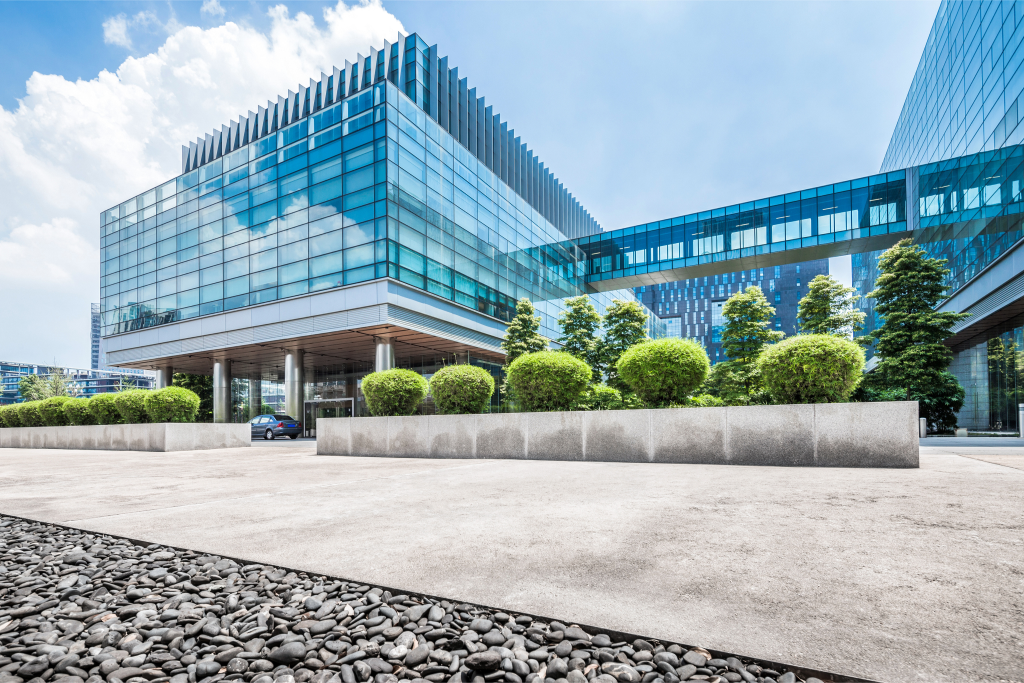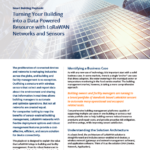
Building Infrastructure and Operations
Turning buildings and operational infrastructure into data-powered resources with LoRaWAN networks and sensors
Senet provides public LoRaWAN network connectivity plans, private networks, and cloud-based network and device management for solution providers and building owners seeking to proactively monitor building infrastructure, provide an inviting and safe environment, and conserve energy. By deploying environmental and infrastructure sensors on a Senet network, property owners can improve operations, save costs, and demonstrate a commitment to the well-being of occupants and the surrounding community.
Digital Transformation of Buildings
The proliferation of network connected devices is reshaping industries across the globe, and building and facility management is no exception. Outfitting a structure with wireless sensors that collect and report data about the environment in real time is helping building managers automate and optimize operations. Comprehensive building management platforms capable of supporting multiple sensor-based applications in a single building or across a real estate portfolio helps reduce repair costs, provides proactive risk mitigation, improves tenant satisfaction, and can even reduce insurance premiums.
Senet’s LoRaWAN networks are optimized for the low power, wide area wireless connectivity requirements of building and industrial applications and can be deployed in public or private configurations to provide value throughout the ecosystem:
Metering & Submetering – Automate and modernize utility meter reading and submetering to enhance service delivery, increase reliability, and provide more accurate billing.
Environmental Monitoring – Monitor a range of environmental conditions to support a healthy and comfortable environment while reducing energy waste.
Predictive Maintenance – Monitor building systems in real-time to identify repair needs before there is a failure.
Occupancy Monitoring – Use real-time information to make better decisions about when and how to use facilities.
Reduce Insurance Premiums & Risk – A cost effective sensor network offers building owners and insurance providers a proven solution to proactively mitigate risks and decrease maintenance and repair costs, leading to an improved market value of the property.

Reliable network connectivity is critical to the delivery of our services and Senet’s Platform-as-a-Service and RAN tools ensure we are able to deploy, manage, and monitor our network infrastructure and sensor deployments, bringing innovation and ease to better building monitoring
Smart Building Playbook
 This playbook details the value LoRaWAN brings to building and facility management. From its robust feature set to the low-cost of deploying and maintaining the network, we explore how LoRaWAN is providing new opportunities to manage and automate building systems.
This playbook details the value LoRaWAN brings to building and facility management. From its robust feature set to the low-cost of deploying and maintaining the network, we explore how LoRaWAN is providing new opportunities to manage and automate building systems.
Explore Related Content
As deployments grow and the data provided by IoT connections becomes mission-critical for protecting work environments and operating profitably, the IoT becomes an embedded part of businesses. Much like energy and water that enterprises need to run their businesses, their IoT infrastructure is becoming a necessary “utility”.

First published by IoT for All: Using a range of wireless sensors, those responsible for building operations can automate the collection of data to monitor energy usage, infrastructure issues, room usage, supply levels,r and more, turning their building into a data-powered resource – a smart building that can provide insights into everything within.

Example Use Cases
What we’re seeing is not just technology adoption, but a wider shift towards smarter, more sustainable operations. With LoRaWAN as an enabler, building owners and municipalities are adapting to change and actively shaping a more efficient and sustainable future.
Water leak sensors placed in areas where leaks are likely to appear, including kitchens, bathrooms, laundry areas, and basements, can be used to instantly notify building management, property owners, and tenants so immediate action can be taken
Natural gas detectors can alert residents, workers, and staff of leaks, facilitating rapid evacuation and alerting maintenance and safety personnel
Real-time data on energy consumption and operating conditions allow facility managers to optimize usage, address inefficiencies, and implement proactive maintenance and energy-saving measures
The long-range capability of LoRaWAN eliminates the need for network extenders or repeaters, contributing to lower infrastructure installation and maintenance costs for submetering in large commercial, mixed-use, or multi-family buildings with long ranges between units or utility service locations
Monitoring indoor air quality, temperature, humidity, and other environmental parameters, support healthy and comfortable building environments while reducing energy waste
Connected devices and real-time monitoring provide potable water and sanitary conditions for the health and safety of residents
Connected pest management solutions allow building managers to automate time consuming manual trap inspections and offer a humane and safe alternative to rodenticides
Automatic notification alerts when bins are reaching pre-defined thresholds provide intelligent route planning for collection service providers and eliminates unnecessary visits and overflowing garbage bins for end users
With real-time information about parking, workspace, and equipment availability, occupants can make better decisions about when and how to use the building
Wireless sensors can be used to monitor the open/close state of doors and windows, providing real-time alerts in the event of unauthorized access or breaches
Network-connected devices can be used across buildings and campus environments to track the location of equipment or inventory both indoors and outside
Tracking deliveries and replenishing supplies throughout facilities can have a significant impact on operations and related costs

